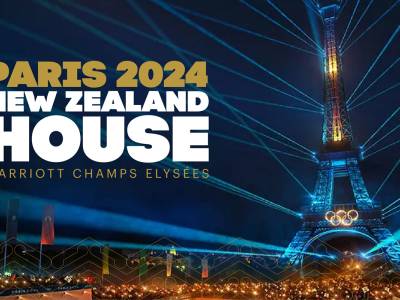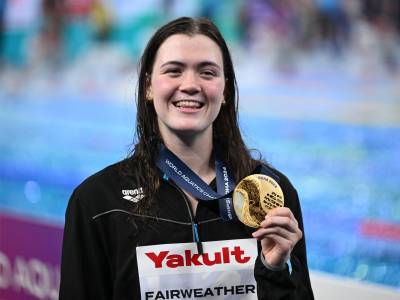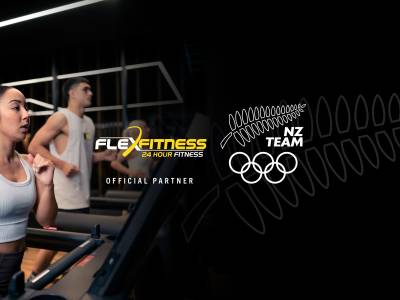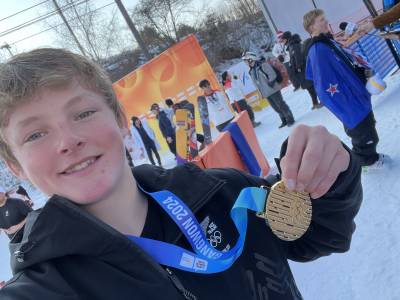Canoe sprint features two boats, the canoe or kayak races in a straight line over various set distances on flat, calm water.
Canoeing - the paddler uses a single-bladed paddle to propel the boat forward and does so on one side of the boat only, and while kneeling on one knee.
Kayaking - the paddler sits in the boat and uses a double-bladed paddle – one blade alternatively on each side of the boat.
The programme now consists of 10 events (5 Men's and 5 Women's). The majority of races are between individuals plus there are also two-person canoe and four-person kayak classes in the Olympic Games.
Finals are contested by eight boats, with heats used to determine who qualifies. In larger fields, semi-finals are used as an intermediate step, bringing together the fastest from the heats to race for the eight final spots. In smaller fields, the fastest boats from the heats qualify directly to the final, with semi-finals used as a second chance for the next fastest.
New Zealand have got a strong performer in Lisa Carrington (our most decorated Olympian, 6 x Olympic medallist) who continues a tradition of individual success in New Zealand canoe racing that goes back to the 1980s. She’s had major success since her first Olympic debut winning a gold medal in London 2012 by dominating the K1 200 event and is also dominating the K1 500 event.
Canoe Sprint at the Olympics
Under its former name of flatwater canoeing, canoe sprint featured at the 1924 Olympic Games in Paris as a demonstration sport. It became a full Olympic discipline for the first time at Berlin 1936.
There have been a number of changes to events over the years with women first competing at London 1948 but only in kayaks. It was not until Tokyo 2020 that women could race for medals in sprint canoes.
At Paris 2024, there will be 10 races in canoe sprint with five for each gender. Noting the K1-200m events now excluded from the Olympic Programme. This event that has been dropped was Lisa Carrington’s favoured event.
Canoe Sprint Competition Rules at Paris 2024
The Olympic canoe sprint races will be held at the Vaires-sur-Marne Nautical Stadium. Up to eight individual athletes (or crews) line up for a sprint canoe or sprint kayak race with each allocated lanes they must stay within and first to the finish line.
There are 10 events at Paris 2024: women's C-1 200m, men's C-1 1000m, women's C-2 500m, men's C-2 500m, women's K-1 500m, men's K-1 1000m, women's K-2 500m, men's K-2 500m, women's K-4 500m and men's K-4 500m.
For each event, there are heats with the top three (top two in team races) going directly through to the semi-finals while the others go into the quarter-finals.
Depending on the number of entrants, the top boats in the quarter-finals will reach the semi-finals with the first four boats in each progressing to the final.
Did you know?
• During a canoe sprint event, the distance between canoes must be at least 5m to avoid turbulence from one boat affecting another.
• Modern boats are usually made of carbon fibre or aramid fibre (eg, Kevlar) with epoxy resin.
• At the Olympics the fastest two qualifiers occupy lanes four and five.
• Canoe racing has been one of New Zealand’s most productive Olympic sports, with ten golds, two silvers and two bronze medals.
• New Zealand’s most decorated Olympian is Lisa Carrington, with five golds and one bronze in canoe sprint events over three Olympic Games to date (2012, 2016 and 2020).
Canoe Sprint Terminology
C1/K1, K2, K4 - Canoe events are notated by the letter C or K to indicate canoe or kayak followed by the number of paddlers per boat (eg, C1 is an individual canoe event, K4 is a four-person kayak event). Sprint event classifications are always followed with the distance (eg, K1-500m is a sprint event for single person-kayaks over 500m, K1 indicates a slalom event for single-person kayaks).
Blade: The wide part of a paddle which passes through the water. The canoe paddler uses a paddle that has one flat blade on one end of the paddle shaft, whereas a kayak paddle uses a paddle with a blade at each end.
Bowman: A paddler who kneels or sits in the forward position of a canoe or kayak
Canoe: A light, narrow, open boat propelled by one, two or four paddlers using single-bladed paddles, from a kneeling position in sprint events, seated in slalom.
5m rule: A rule prohibiting any boat from coming within 5m of the boat positioned next to it, thereby preventing it from gaining the advantage of riding the other boat’s wash (being pulled along by the rough water left behind a boat).
Flatwater: Lake water or a slow-moving river current with no rapids. Canoe sprint events are raced within lanes on flatwater.
Sternsman: A paddler who kneels or sits in the back position of a canoe or kayak.
Timeline
Mid-1900s Canoe sport competitions began.
1866 The Royal Canoe Club of London was formed and was the first organisation interested in developing the sport.
1871 The New York Canoe Club was founded.
1890s Canoe sport was popular all over the European continent.
1924 Olympic Games in Paris – flatwater canoeing featured as a demonstration sport.
1936 Canoe sprints entered the Olympics in Berlin – its events have changed and adapted in order to improve its overall standing and follow current trends and boat technological advances.
1948 Olympic Games in London – women competed for the first time, in the kayak event only.
1972 Olympics in Munich – the first time New Zealand competed in this discipline, sending two males for the K1-1000m event.
2012 Olympic Games in London – the three men’s flatwater 500m events were replaced by 200m events.
2024 Olympic Games in Paris - the events have reduced from 12 to 10, with the K1-200m for both genders removed to make way for the Canoe Slalom Extreme discipline.
Tweet Share
Canoe/Kayak - Sprint Games History
-
Olympic Summer Games Tokyo 2020
3 -
Olympic Summer Youth Games Buenos Aires 2018
-
Olympic Summer Games Rio 2016
1 1 -
Olympic Summer Youth Games Nanjing 2014
-
Australian Youth Olympic Festival Sydney 2013
2 3 3 -
Olympic Summer Games London 2012
1 -
Olympic Summer Youth Games Singapore 2010
-
Australian Youth Olympic Festival Australian Youth Olympic Festival 2009
2 2 2 -
Olympic Summer Games Beijing 2008
-
Australian Youth Olympic Festival Sydney Youth Festival 2007
1








